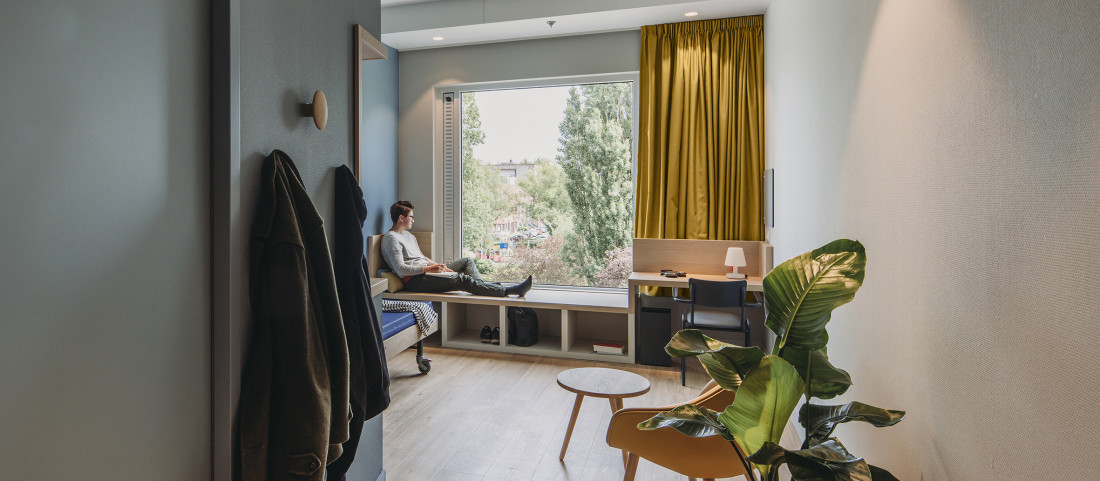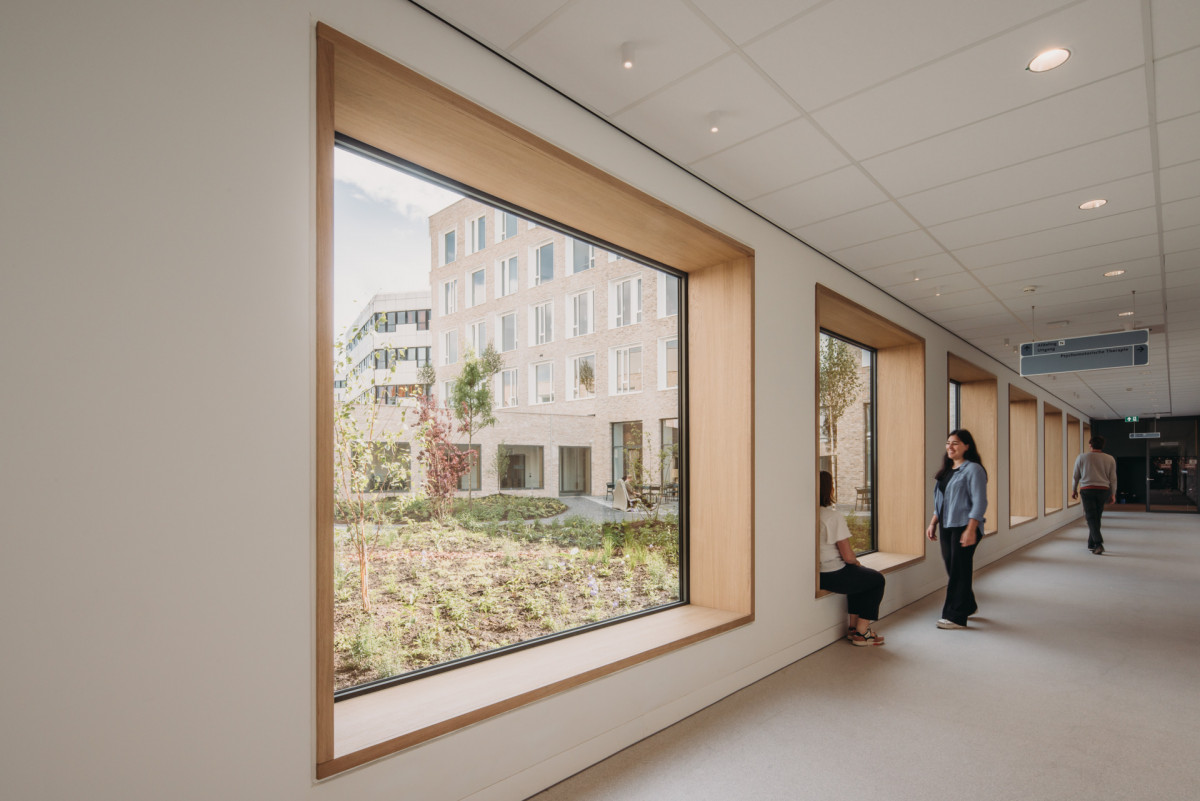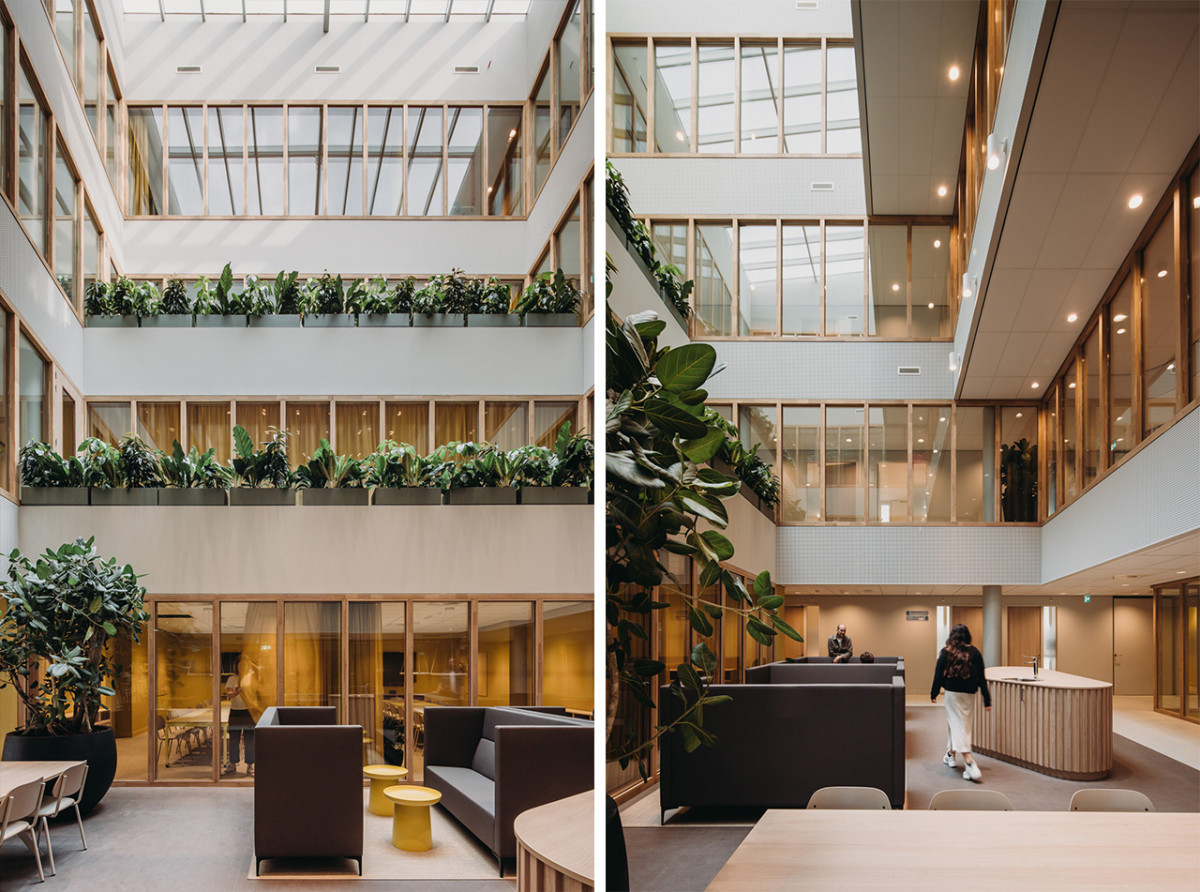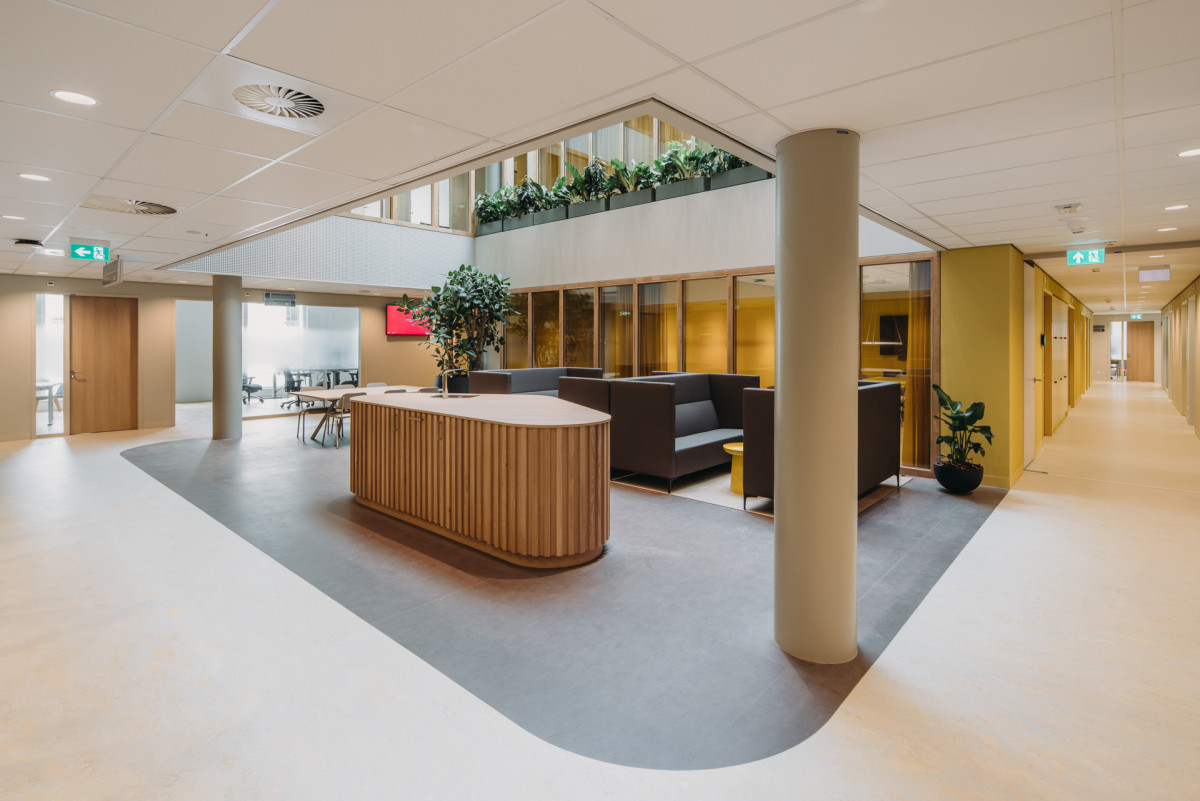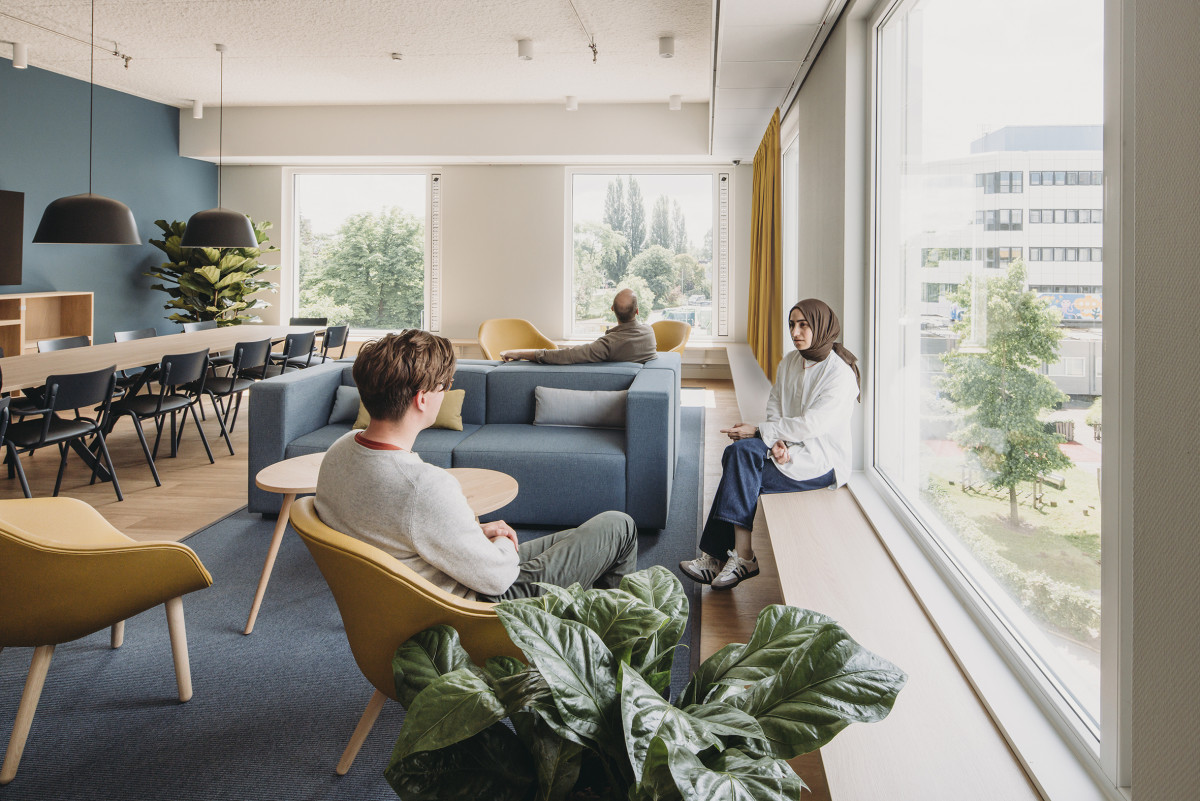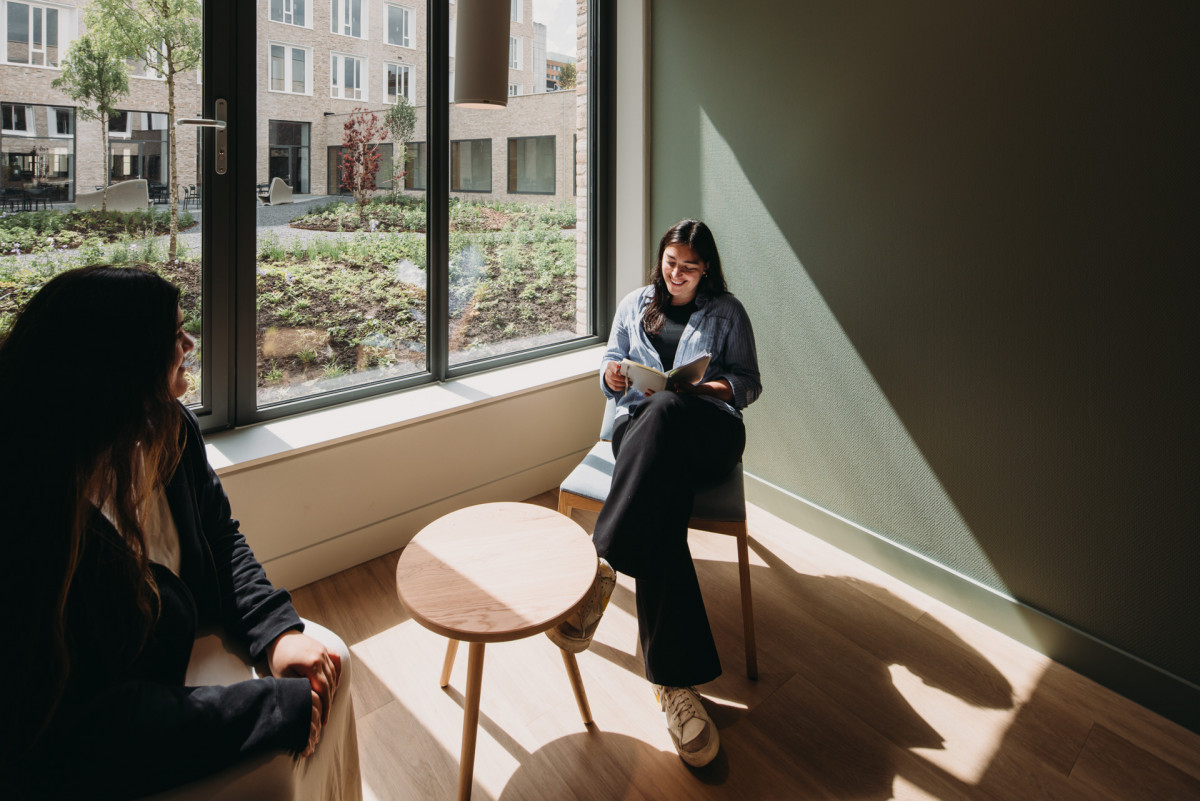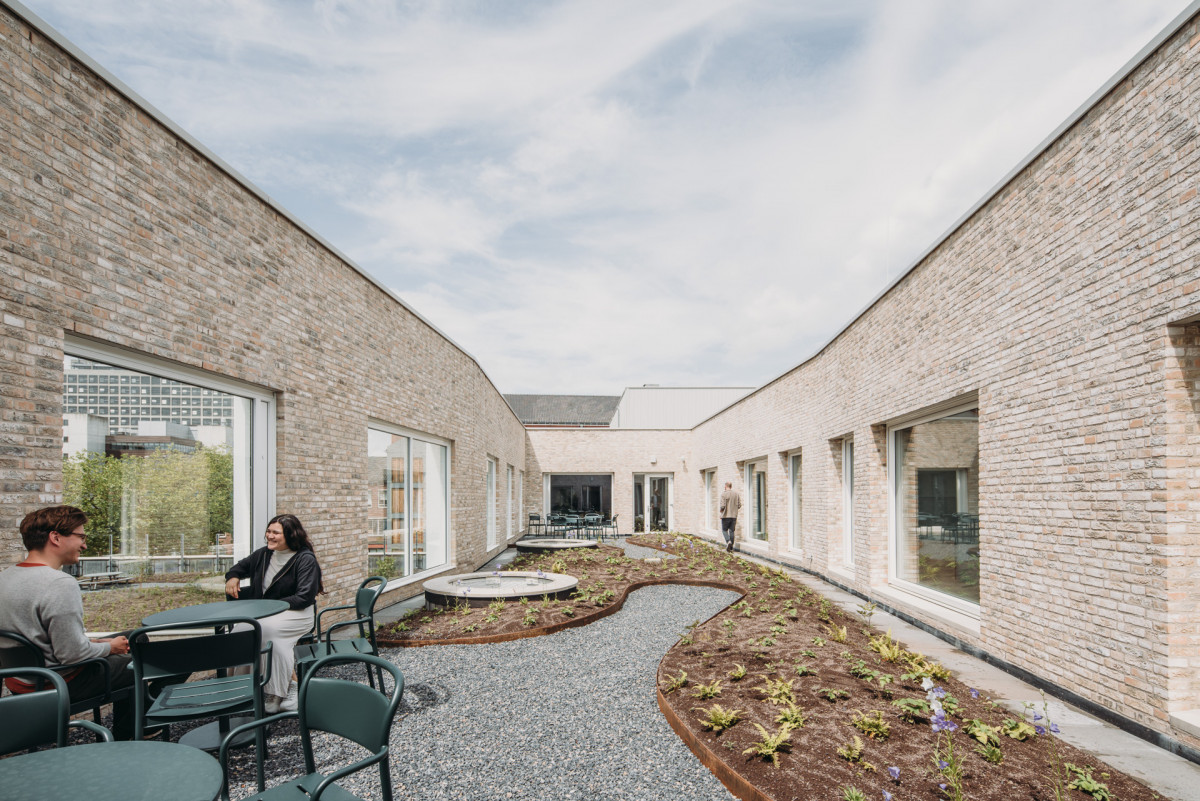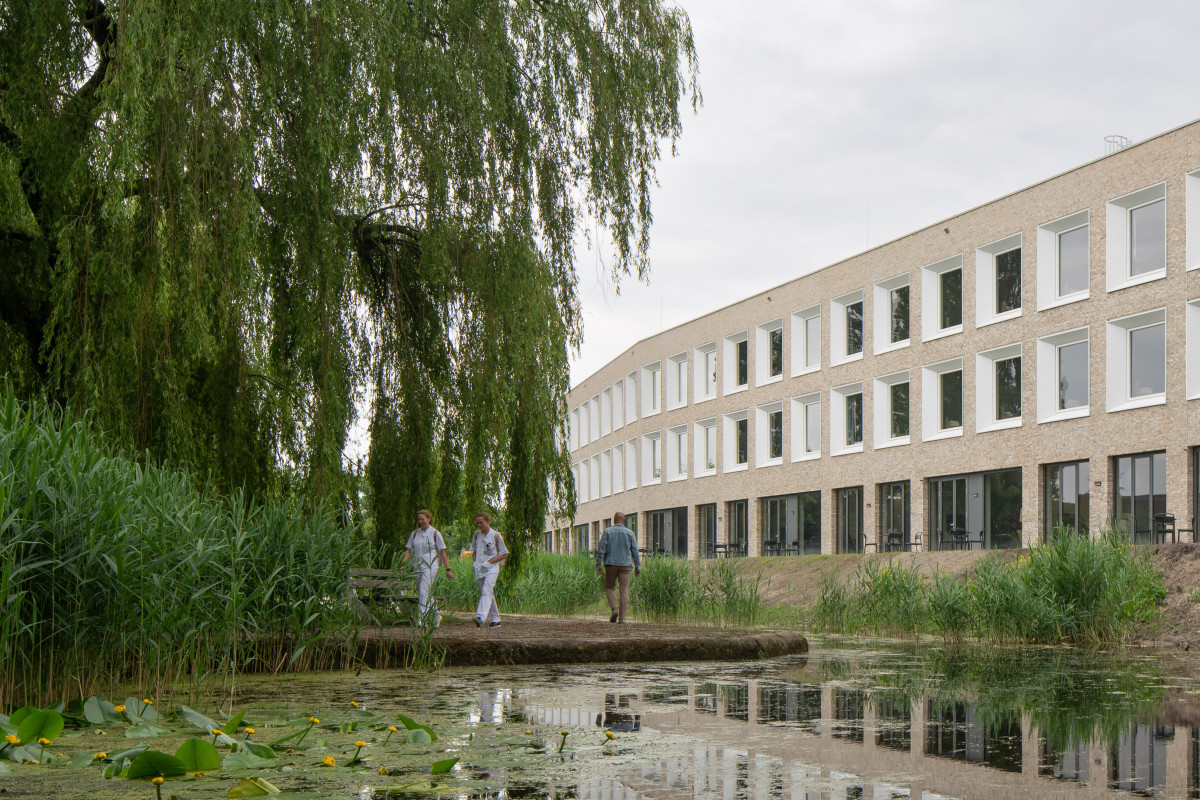Atelier PRO and Vakwerk Architecten were commissioned to work on a new psychiatric ward by the University Medical Centre Groningen. In addition to providing healthcare, the building also had to accommodate education and research. Main goal was to minimise the patient’s perception of being hospitalised and to maintain a connection with society. Three principles therefore play a central role in the design: for people to wake up with the sun; to be surrounded by meaningful spaces, and to experience normality as much as possible.
Psychiatric care at the heart of society
The new University Centre for Psychiatry (UCP) replaces an existing, outdated accommodation from the 1960s, and is part of a larger renovation operation. The new building consists of a polyclinic comprising therapy and research rooms, and a clinic for the outpatient wards and rooms for in-house patients; both wings are connected by two 'cloister corridors' which surround a green courtyard. The in-house patient rooms, where people tend to stay for longer periods of time, are deliberately located on the city side of the complex - next to the Oosterpark neighbourhood and facing the east, and therefore the sunrise; the polyclinic, where people come for appointments only, is on the opposite side, facing the UMCG's Central Medical Complex.
"Waking up with the sun": daylight throughout the day
"Daylight is important for everyone, but for vulnerable people even more so, and this is especially true for people with mental illness; daylight is therefore the strongest leitmotif in our design," Dorte Kristensen, architect-director atelier PRO.
Due to the orientation towards the east, the patient rooms in the UCP all receive morning light, which allows patients to sit in their windowsills after they wake up, with the sun on their faces. Light, however, is not only important in the morning, but throughout the day, as it continuously affects human biorhythms; therefore, at the UCP the daylight 'follows' the patients, with afternoon and evening light in the living rooms and an abundance of natural light in the corridors.
The public patio: outdoor space as a basic right
It is important for people to experience daylight when they are inside, but it is just as important for them to have access to generous outdoor spaces, with abundant daylight, greenery and atmosphere. This is why the large patio is one of the central design features of the new UCP - a spacious courtyard garden, with a large terrace which faces the sun. This garden is accessible to everyone in the UCP: patients and their visitors, as well as medical staff and researchers; patients on the more restricted wards have their own, private indoor gardens - but even they have access to outdoor spaces.
Connecting with the world: a view of the city and city nature
The green courtyard garden is visible throughout the building - not just from the grand café facing the garden, but also, for example, from the two cloister corridors connecting the polyclininc to the clinic. Seating niches can be found along both these corridors, offering pleasant, informal places to read or meet with visitors. The clinic faces the city - the canal with its coots, parents on their way to school with their children, everyday life. Thus, in-house patients – who are often in a vulnerable state - remain connected to the outside world, albeit in a safe and secluded way.
More than an interior alone: meaningful space
For psychiatric patients, it’s important that spaces are meaningful, that they offer distraction and are pleasant to spend time in. This was a guiding principle in designing the interior, which has been applied throughout the entire building, from the entrance hall with the grand café to the patient rooms, the therapy rooms and even the corridors. Colours have been chosen to match specific functions and wayfinding has been kept minimal, making the building feel less 'medical'. The intelligent combination of light, views, window sills, materials and colour positively guides people’s perceptions and feelings.
Architecture as a form of 'normality
There is something reassuring about normality, especially for vulnerable people; this is why the new UCP doesn’t feel like a typical hospital. All rooms have been fitted with curtains - including the patients' rooms, which allows for people to control their own daily rhythm; fixed furniture makes for a warm, homely atmosphere, and wide window sills mean these can also be used for rooming-in, allowing partners and family members to stay over if wanted - a unique feature in psychiatric care.
‘The new UCP is an ode to the window sill: the window sill as an informal place to sit. A window sill is a small space in a large space, which simultaneously offers you two things: security and a choice – the choice to withdraw or participate. It’s also a place between the inside and the outside: you can connect with the other people in the same space as you, or dream away while looking at the world,’ Dorte Kristensen, architect-director atelier PRO.
The new UCP therefore feels more like a 'home' and less like a 'heavy' psychiatric institution.
Care and research in a single hospital
The building accommodates patient care, but also serves as a hub for research and education. The UMCG wants to offer people with psychiatric disorders the best possible diagnosis and treatment, and in this respect scientific research plays an important role. By combining knowledge development with its clinical implementation, the future of psychiatric patients can be considerably improved. The design of the new UCP therefore facilitates both care and research processes. It is a secure and homely environment for patients, where staff and researchers can simultaneously do their work in a safe and streamlined way.

